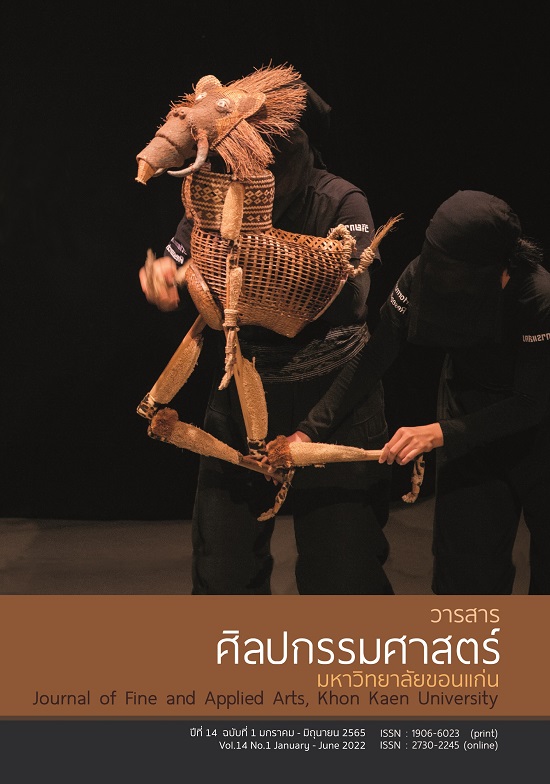Usage Behavior of Social Media for Education of the Students of Rajabhat Rajanagarindra University in Chachoengsao Province
Main Article Content
Abstract
This research entitled “Usage Behavior of Social Media for Education of the Students of Rajabhat Rajanagarindra University in Chachoengsao Province.” consisted of two objectives, namely : 1. To study the overall atmosphere of Online Usage Behavior of Social Media for Education of the Students of Rajabhat Rajanagarindra University by the individual. 2. To analyze the relationship between the individual’s factors, the area to accession by Online Usage Behavior of Social Media for Education of the Students of Rajabhat Rajanagarindra University. The study was survey research in which the population of the report consisted of classifies 1.To set undergraduate student years 1-4. 2.Each year students are classified by faculties which consist of 5 faculties and 1 graduated school. 3. A total of 98 students in assorted years of assortment were randomized through a Google form online questionnaire, which had the confidence in an attitude of 0.87. Data were analyzed by statistics, percentage, mean, and standard deviation. The hypothesis was tested using Chi-square statistics, a one-way test, and analysis of variance. The research results showed that 77.6% of the students were mostly female (mean age of 21.6 years, SD = 3.8) and had a monthly income of less than 5,000 baht, 51.9% (average income is about 8,626 baht, SD = 9,951.4). The vast majority of them had never studied online, 89.8 percent, but preferred 42.9 percent for learning using online media. Social networking is popular through Facebook, with devices being smartphones 73.2 percent. Which aims to submit the report on subjects as assigned the most (59.8 percent), followed by To be informed and follow the news in the current situation High level, 53.1% used for communicating with other people, 46.4%, to find things they are interested in and want or do business at, 49.0% at a high level, and to express their status, identity or be known by society at the Most of them, 48.5 percent, with the most popular places to use them are rooms or private homes, 79.6 percent.
Article Details

This work is licensed under a Creative Commons Attribution-NonCommercial-NoDerivatives 4.0 International License.
Content and information in articles published in the Journal of Fine and Applied Arts of Khon Kaen University is regarded as the opinion and sole responsibility of the author(s) directly; therefore, editors are not obliged to agree to or share any responsibility with regard to the content and information that appears within these articles.
All articles, information, content, image, etc. that have been published in the Journal of Fine and Applied Arts of Khon Kaen University is the copyright of the Journal of Fine and Appllied Arts of Khon Kaen University. Any person or organization who wishes to distribute all or parts of the articles for further dissemination or other usage must first receive permission from the Journal of Fine and Applied Arts of Khon Kaen University before proceeding to do so.
References
จุฑารัตน์ ศราวณะวงศ์, ขจร ฝ้ายเทศ, ดวงแก้ว เงินพูนทรัพย์, และวัลลภา จันทรดี. (2560). พฤติกรรมการใช้สื่อสังคมออนไลน์ของนิสิตระดับปริญญาตรี มหาวิทยาลัยเกษตรศาสตร์. วารสารบรรณศาสตร์ มศว., 10(2), 17-31.
พรรณิการ์ พุ่มจันทร์,นุชจรีย์ หงส์เหลี่ยม, และพัชดาพรรณ อุดมเพียร. (2558). พฤติกรรมการใช้สื่อสังคมออนไลน์ของนักศึกษาแพทย์ ระดับปรีคลินิกของคณะแพทยศาสตร์ศิริราชพยาบาล. วารสารเวชบันทึก ศิริราช, 8(1), 27-35.
พระมหาเอกเมธิกญาโณ (เจตสลัน), และคริชณะ ฉิมมณี. (2563). พฤติกรรมการใช้สื่อสังคมออนไลน์ของพระนิสิตระดับปริญญาตรี มหาวิทยาลัยมหาจุฬาลงกรณราชวิทยาลัย อำเภอวังน้อย จังหวัดพระนครศรีอยุธยา. วารสารมหาจุฬาวิชาการ, 7(2), 178-190.
พัชญ์สิตา เหลี่ยมทองคํา, และนมิดา ซื่อสัตย์สกุลชัย. (2561). พฤติกรรมการใช้สื่อสังคมออนไลน์ของนักศึกษาในรายวิชาปฏิสัมพันธ์ ระหว่างมนุษย์กับคอมพิวเตอร์. ค้นเมื่อ 1 มกราคม 2564, จาก http://www.teched.rmutt.ac.th/ili2018/wp-content/uploads/2018/08/12-ILI-011-
พัชญ์สิตา-เหลี่ยมทองคำ-.pdf
มหาวิทยาลัยราชภัฏราชนครินทร์. (2562). แผนยุทธศาสตร์มหาวิทยาลัยราชภัฏราชนครินทร์ระย 4 ปี (พ.ศ. 2561-2564). ค้นเมื่อ 1 มกราคม 2564, จาก http://www.rru.ac.th/doc/pdf/PlanRRU2561_2564.pdf
ระพีพรรณ ฉลองสุข, นฤภร สำราญรัตน์, พัทธมน กอกอบลาภ, พิรญาณ์ ใจชื้น, และวิภาวี พุกจินดา. (2557). พฤติกรรมและทัศนคติของนักศึกษาคณะเภสัชศาสตร์ มหาวิทยาลัยศิลปากร ต่อการใช้สื่อสังคมออนไลน์ในการเรียน. ค้นเมื่อ 1 มกราคม 2564, จาก https://www.tci-thaijo.org/index.php/ Veridian-E-Journal/article/view/27330
สำนักงานสภาพัฒนาการเศรษฐกิจลังคมแห่งชาติ. (2562). แผนพัฒนาเศรษฐกิจและสังคมแห่งชาติ ฉบับที่ 12. ค้นเมื่อ 1 มกราคม 2564, จาก https://www.nesdb.go.th/main.php?filename=develop_issue
อรุณรัตน์ ศรีชูศิลป์. (2554). พฤติกรรมการใช้เครือข่ายสังคมออนไลน์ ของนักศึกษาปริญญาบัณฑิต คณะครุศาสตร์ ศึกษาศาสตร์ในมหาวิทยาลัยของรัฐ . มหาวิทยาลัยศิลปากร:นครปฐม. ค้นเมื่อ 3 มิถุนายน 2565, จาก https://doi.nrct.go.th/ListDoi/listDetail?Resolve_DOI=10.14457/SU.res.2011.22
Brown, T. H. (2006). Beyond constructivism: Navigationism in the knowledge era. Retrieved January 1, 2021, from https://www.emerald.com/insight/content/doi/10.1108/ 10748120610690681/full/html
Kivunja, C. (2015). Exploring the pedagogical meaning and implications of the 4Cs super skills for the 21st century through Bruner’s 5E lenses of knowledge construction to improve pedagogies of the new learning paradigm. Retrieved 1 January 1, 2021, from https://rune.une.edu.au/web/handle/1959.11/16728
Lim, J. S. Y., Agostinho, S., Harper, B., & Chicharo, J. F. (2013). Investigating the use of social media by university undergraduate informatics programs in Malaysia. Presented at the International Conference on Educational Technologies (ICEduTech), November 29-December 1, 2013, Kuala Lumpur, Malaysia, International Association for Development of the Information Society.
Romiszowski, A. (2004). How’s the E-learning baby?: Factors leading to success or failure of an educational technology innovation, educational technology, #4. Retrieved January 1, 2021, from https://www.jstor.org/stable/44428871?seq=1#metadata_info_ tab_contents
White, C. M. (2012). Social media, crisis communication, and emergency management: Leveraging web 2.0 technologies. Boca Raton : CRC Press.
Yamane, T. (1967). Statistics: An introductory analysis. 2nd ed. New York : Harper and Row.


